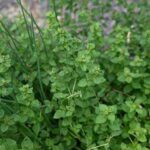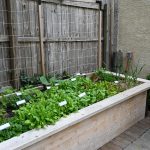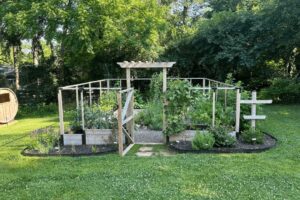
[et_pb_section fb_built=”1″ admin_label=”section” _builder_version=”4.16″ da_disable_devices=”off|off|off” global_colors_info=”{}” da_is_popup=”off” da_exit_intent=”off” da_has_close=”on” da_alt_close=”off” da_dark_close=”off” da_not_modal=”on” da_is_singular=”off” da_with_loader=”off” da_has_shadow=”on”][et_pb_row admin_label=”row” _builder_version=”4.16″ background_size=”initial” background_position=”top_left” background_repeat=”repeat” global_colors_info=”{}”][et_pb_column type=”4_4″ _builder_version=”4.16″ custom_padding=”|||” global_colors_info=”{}” custom_padding__hover=”|||”][et_pb_text _builder_version=”4.27.2″ _module_preset=”default” text_text_color=”#000000″ link_font=”|700|||on|||#000000|” link_text_color=”#000000″ header_2_line_height=”1.5em” header_2_font_size_tablet=”” header_2_font_size_phone=”23px” header_2_font_size_last_edited=”on|phone” global_colors_info=”{}”]
Why Plant Garlic and Shallots?
Growing garlic and shallots at home is a rewarding winter gardening task. Because garlic and shallots can survive cold winter weather, planting these crops in fall is a great way to improve next year’s harvest by acting now.
Garlic and shallots are both easy-to-grow alliums that form the base of many different recipes. In summer (typically July) when these crops become ready for harvest, the fresh flavors will pair well with other crops you can grow at home like tomatoes and eggplant.
Here is a quick guide on how to successfully plant and grow garlic and shallots in fall:
[/et_pb_text][et_pb_text _builder_version=”4.27.2″ _module_preset=”default” text_text_color=”#000000″ link_font=”|700|||on|||#000000|” link_text_color=”#000000″ header_2_line_height=”1.5em” header_2_font_size_tablet=”” header_2_font_size_phone=”23px” header_2_font_size_last_edited=”on|phone” global_colors_info=”{}”]
Hardneck versus Softneck Garlic
When choosing a variety of garlic to plant, it’s important to consider your climate. There are two main types of garlic, known as “hardneck” and “softneck” garlic. As its name suggests, if you break open a bulb of hardneck garlic you will see a hard stem between the bulbs. Hardneck garlic grows well in cold climates and produces “scapes” (edible green shoots) in spring. However, they have a shorter storage life than softneck garlic.
Softneck garlic can typically be stored for up to six months as opposed to three or four. In our climate, we prefer hardneck garlic for its reliability in cold weather and delicious scape.
[/et_pb_text][et_pb_image src=”https://backyard-eats.com/wp-content/uploads/2024/10/pexels-greenwish-_-137929759-12353768.jpg” title_text=”pexels-greenwish-_-137929759-12353768″ show_bottom_space=”off” _builder_version=”4.27.2″ _module_preset=”default” custom_margin=”20px||20px||true|false” global_colors_info=”{}”][/et_pb_image][et_pb_text _builder_version=”4.27.2″ _module_preset=”default” global_colors_info=”{}”]
Photo by Kaboompics.com on Unsplash
[/et_pb_text][et_pb_text _builder_version=”4.27.2″ _module_preset=”default” text_text_color=”#000000″ link_font=”|700|||on|||#000000|” link_text_color=”#000000″ header_2_line_height=”1.5em” header_2_font_size_tablet=”” header_2_font_size_phone=”23px” header_2_font_size_last_edited=”on|phone” global_colors_info=”{}”]
When to Plant Garlic and Shallots
At Backyard Eats, we often plant garlic and shallots in November. We’ve also seen that garlic and shallots remain reliably successful when planted anytime before the ground freezes for the winter.
This timing window is essential for garlic or shallot cloves to establish roots before winter, but not put too much energy into growing a stalk or leaves. These would suck energy from the clove and prevent it from forming a new full-sized bulb. Once spring’s warm weather returns, having a pre-existing root structure will help the bulbs develop more quickly because it will be able to put its energy upwards instead of into root growth.
[/et_pb_text][et_pb_text _builder_version=”4.27.2″ _module_preset=”default” text_text_color=”#000000″ link_font=”|700|||on|||#000000|” link_text_color=”#000000″ header_2_line_height=”1.5em” header_2_font_size_tablet=”” header_2_font_size_phone=”23px” header_2_font_size_last_edited=”on|phone” global_colors_info=”{}”]
How to Plant Garlic and Shallots
Ideally, you should plant garlic and shallots in a location that receives full sun (6-8 hours a day). Also, be aware that these crops won’t be ready to harvest until late summer, so they will take up space in your spring & summer garden planting plan. Garlic prefers nutrient-rich and loamy soil, so consider adding a layer of compost to your raised beds in fall for soil health and weed suppression over winter. We recommend raised beds for annual crops like alliums because they allow for greater control over soil texture.
The process for planting garlic and shallots is very similar. Break up your bulbs into individual cloves, keeping the outer papery layer intact if possible. Choose the largest, healthiest bulbs that are firm and free of damage. Plant each clove with the pointed end up towards the sun: this is where the stalk will grow in spring. It’s typically recommended to space cloves about 6-8 inches apart to leave room for mature bulbs to develop. Garlic can be planted at 3-4” deep, whereas shallots can be planted with the point at soil level.
If not planted deep enough, garlic may resurface before spring. Adding a layer of organic mulch or salt hay (not straw, which can harbor fungal disease and weeds) can help protect your crops from extreme winter weather or creatures. You can move aside some mulch in spring to help sunlight reach growing plants.
[/et_pb_text][et_pb_image src=”https://backyard-eats.com/wp-content/uploads/2024/10/pexels-karolina-grabowska-4022586.jpg” title_text=”pexels-karolina-grabowska-4022586″ show_bottom_space=”off” _builder_version=”4.27.2″ _module_preset=”default” custom_margin=”20px||20px||true|false” global_colors_info=”{}”][/et_pb_image][et_pb_text _builder_version=”4.27.2″ _module_preset=”default” global_colors_info=”{}”]
Photo by greenwish_ on Unsplash
[/et_pb_text][et_pb_text _builder_version=”4.27.2″ _module_preset=”default” text_text_color=”#000000″ link_font=”|700|||on|||#000000|” link_text_color=”#000000″ header_2_line_height=”1.5em” header_2_font_size_tablet=”” header_2_font_size_phone=”23px” header_2_font_size_last_edited=”on|phone” global_colors_info=”{}”]
How Alliums Grow Over Winter
After planting individual cloves, cold weather will cause garlic and shallots to go dormant during winter. In spring, when daylight and warmth increases, the crops will be triggered to grow leaves. As a result, each clove will multiply underground to form the typical bulb of garlic or shallots that you are used to seeing in the grocery store. This process is known as vernalization.
After garlic and shallots begin to bulb underground, they will send up new vegetative shoots as they continue to grow. If you are growing hardneck garlic, you can enjoy an early harvest of garlic scapes without damaging the developing bulbs. In fact, harvesting the scape in late June will allow the plant to focus more energy on bulb production. Garlic and shallots are typically ready to harvest in mid-late summer when the leaves begin to die back and turn brown. In Philadelphia we typically harvest garlic in July.
[/et_pb_text][et_pb_text _builder_version=”4.27.2″ _module_preset=”default” text_text_color=”#000000″ link_font=”|700|||on|||#000000|” link_text_color=”#000000″ header_2_line_height=”1.5em” header_2_font_size_tablet=”” header_2_font_size_phone=”23px” header_2_font_size_last_edited=”on|phone” global_colors_info=”{}”]
Learn More
The satisfaction of growing garlic and shallots at home is a great way to experience the magic of homegrown food! For more advice on harvesting and storing garlic and shallots, try our Harvest Toolkit.
Ready to keep your garden thriving year-round? Don’t forget to subscribe to our newsletter for more tips on how to make the most of your homegrown produce!
[/et_pb_text][et_pb_button button_url=”@ET-DC@eyJkeW5hbWljIjp0cnVlLCJjb250ZW50IjoicG9zdF9saW5rX3VybF9wYWdlIiwic2V0dGluZ3MiOnsicG9zdF9pZCI6IjU4MjY0In19@” url_new_window=”on” button_text=”BOOK A CONSULTATION” button_alignment=”left” button_alignment_tablet=”left” button_alignment_phone=”left” button_alignment_last_edited=”on|tablet” disabled_on=”off|off|off” _builder_version=”4.27.0″ _dynamic_attributes=”button_url” _module_preset=”737bea5a-e063-4b24-af3f-21ce28f0bf38″ button_bg_color=”gcid-3b5ac83a-684c-4379-a559-60b2aa9e8157″ button_border_color=”gcid-3b5ac83a-684c-4379-a559-60b2aa9e8157″ button_letter_spacing=”1px” button_font=”Roboto|700||on|||||” z_index=”90″ custom_margin=”0px|0px|30px|0px|false|false” custom_margin_tablet=”0px|0px|0px|0px|false|false” custom_margin_phone=”0px|0px|0px|0px|false|false” custom_margin_last_edited=”on|desktop” locked=”off” global_colors_info=”{%22gcid-3b5ac83a-684c-4379-a559-60b2aa9e8157%22:%91%22button_border_color__hover%22,%22button_bg_color%22,%22button_border_color%22%93}” button_text_color__hover_enabled=”on|hover” button_text_color__hover=”#844B67″ button_bg_enable_color__hover=”on” button_border_color__hover=”#88667b” button_border_color__hover_enabled=”on|desktop”][/et_pb_button][/et_pb_column][/et_pb_row][/et_pb_section]






